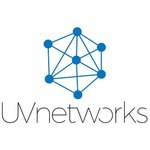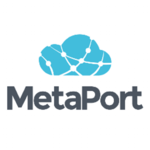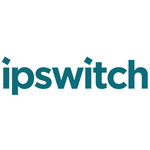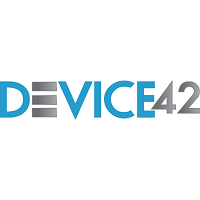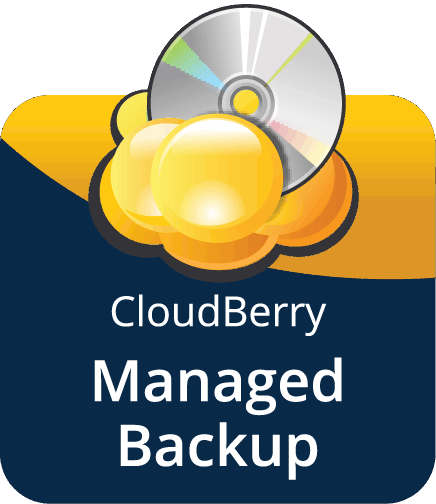Yes, most network mapping software is designed to be accessible from numerous devices and platforms. This means you may run the software on any laptop, desktop, tablet, or smartphone, independent of operating system. This provides flexibility and convenience of use because you can browse your network map from anywhere, at any time. However, before purchase, make sure the software is compatible with your specific devices and platforms.
List of 20 Best Network Mapping Software
10-Strike Network Monitor (Pro) solution for real-time monitoring of your IT infrastructure. This powerful tool keeps a constant eye on critical device parameters to ensure they are functioning safely, while also providing comprehensive alerts and tr...Read More 10-Strike Network Monitor(Pro)
DEKSI Network Administrator solution for network administrators. With its advanced features like remote access, device management, and powerful monitoring of protocols and services, this comprehensive tool provides valuable insights for complete cont...Read More DEKSI Network Administrator
Nmap is open-source software designed for network scanning and analysis. It helps users identify potential security threats and troubleshoot network problems. With its capability to detect hosts, services, and operating systems, Nmap is a crucial too...Read More Nmap
OSPInsight is a software that is transforming the way fiber optic networks are managed. With its top-of-the-line technology, OSPInsight provides unmatched solutions for enhancing operational efficiency and overseeing infrastructure. Our unique approa...Read More OSPInsight
UVexplorer is a network mapping solution for effortless IT management. This intuitive tool effortlessly uncovers, documents, and monitors your infrastructure, giving you detailed device inventories and updated network maps for seamless troubleshootin...Read More UVexplorer
netTerrain Logical solution for network visualization and documentation. This powerful tool enhances troubleshooting and planning processes, while simultaneously reducing operational expenses and improving overall IT efficiency. With its comprehensiv...Read More netTerrain Logical
MetaPort is a technology solution for efficient management of your enterprise mobility suite. Say goodbye to tedious processes and experience streamlined telecom, SaaS, and UCaaS management with MetaPorts advanced features. With increased visibility...Read More MetaPort
NetBrain is the superior no-code automation platform that revolutionizes network operations with swift visibility and diagnostics. With no scripting required, our cutting-edge solution simplifies intricate tasks and elevates IT operations seamlessly...Read More NetBrain
Intermapper is network management software that seamlessly scans and tracks all devices on your network. Its proactive performance monitoring quickly identifies and notifies you of any potential issues through multiple communication channels. Real-ti...Read More Intermapper
LanTopoLog 2 solution for network mapping and management. This advanced software streamlines network discovery and continuously monitors devices, allowing for quick troubleshooting and efficient administration. Gain a comprehensive understanding of y...Read More LanTopoLog 2
Domotz is a network monitoring software for IT experts and MSPs. With its convenient remote login, monitoring, management, and control capabilities, Domotz enables seamless access to a wide range of internet-connected devices, such as Smart TVs, air...Read More Domotz
Site24x7 is a powerful, all-in-one monitoring solution built for DevOps teams, system engineers, and IT admins. With its cloud-based platform, Site24x7 provides thorough monitoring of websites, servers, networks, applications, and cloud services, cat...Read More Site24x7
WhatsUp Gold - the leading monitoring solution designed specifically for Windows users. With real-time visibility into traffic, applications, virtual environments, and device configurations, you can proactively identify and address network issues. Fu...Read More WhatsUp Gold
ForeScout CounterACT Edge is a cybersecurity solution designed to continuously monitor and safeguard all devices. With real-time threat detection and response, this software enables organizations to proactively manage risk and maintain compliance thr...Read More ForeScout CounterACT Edge
AppViewX AUTOMATION is a solution for managing, automating, and orchestrating networks in multi-vendor and hybrid cloud environments. With our platform, you can easily streamline tasks, handle configurations, and empower your DevOps, NetOps, and SecO...Read More AppViewX AUTOMATION
Systweak VPN - your ultimate solution for online data privacy. With its advanced features, keep your identity protected and enjoy secure browsing and Wi-Fi connection. Get unlimited bandwidth and device connectivity, along with access to streaming se...Read More Systweak VPN
Device42 is a asset management system that revolutionizes your IT operations. Say goodbye to complex tracking and scattered data, and embrace a unified solution with Webhooks, API integration, and robust workflow management tools. With Device42, opti...Read More Device42
CloudBerry Managed Backup is a backup solution for managed service providers and enterprise IT teams. Our all-in-one service provides centralized management and monitoring for dependable data backup. With our customizable features and user-friendly i...Read More CloudBerry Managed Backup
Named as Microsoft Visio, this software is solution for creating detailed and polished flowcharts for your organization. Its user-friendly interface allows you to effortlessly communicate complex data through charts, diagrams, and other graphical ele...Read More Visio
PRTG is software for website monitoring that offers a range of tools to closely monitor your networks performance and ensure the availability of its components. It uses advanced technologies to track traffic, monitor usage, and provide real-time upda...Read More PRTG
Learn More About Network Mapping Software
- What Is Network Mapping Software?
- What Are The Recent Trends In Network Mapping Software?
- Benefits Of Using Network Mapping Software
- Important Factors To Consider While Purchasing Network Mapping Software?
- What Are The Key Features To Look For In Network Mapping Software?
- Why Do Businesses Need Network Mapping Software?
- How Much Time Is Required To Implement Network Mapping Software?
- What Is The Level Of Customization Available In Network Mapping Software?
- Which Industries Can Benefit The Most From Network Mapping Software?
- Conclusion
What Is Network Mapping Software?
Network mapping software is a useful tool that helps firms view and document their network infrastructure. It enables IT professionals and network managers to acquire a thorough grasp of their network's topology, including the devices and connections that comprise it. At its foundation, network mapping software generates a map or diagram of a company's network, showing how devices are connected and data flows through it.
This facilitates troubleshooting and the identification of potential issues. This software not only displays a visual depiction of the network, but it also provides useful insights and statistics. It can offer information about network traffic, device performance, and network utilization. This information is critical for network performance and capacity planning.
Furthermore, network mapping software can scan the network and automatically detect devices, reducing the need for manual input. It can also generate reports, track changes, and monitor network health, delivering real-time information about the network's state. There are three types of network mapping software: on-premises, cloud-based, and hybrid solutions.
Each has distinct features, as well as advantages and disadvantages, so organizations must examine their demands and select software that best meets their goals. Investing in network mapping software can provide several benefits to a firm. It can help with network administration, reduce downtime and costs, improve security, and promote better decision-making. Network mapping software, with its user-friendly interface and extensive capabilities, is an invaluable asset to any firm wanting to enhance its network architecture.
What Are The Recent Trends In Network Mapping Software?
The world of technology is continuously changing, and network mapping software is no exception. In recent years, we have seen an explosion of new features and developments in this sector, making it a must-have tool for organizations of all size.
Let's take a closer look at the latest trends in network mapping software and how they might help you as a purchaser.
1. Cloud-Based Solutions: As remote work becomes more common, and more firms require flexible and accessible solutions, cloud-based network mapping software is becoming increasingly popular. This enables customers to access and control their networks from any location, eliminating the requirement for on-premise installation. Furthermore, cloud-based solutions are scalable and cost-effective, making them popular among purchasers.
2. Automation And AI: Network mapping software is taking advantage of advances in artificial intelligence (AI) and machine learning (ML) to provide automated functionality. These include network detection, device classification, and intelligent mapping, which improves network mapping speed, accuracy, and labor efficiency. This tendency is especially useful to firms with vast and sophisticated networks.
3. Integration With Other Products: Network mapping software is increasingly being combined with other products, including IT service management (ITSM) and security solutions. This enables a more comprehensive and efficient approach to network management, with a single dashboard for all operations. It also allows organizations to better monitor and defend their networks, which is critical in light of growing cyber threats.
4. Virtual And Augmented Reality: Another rising trend in network mapping software is the incorporation of virtual and augmented reality (VR/AR) technologies. This enables users to view and engage with their networks in a more immersive and realistic manner. It also allows remote teams to interact and troubleshoot network issues in real time, making it an extremely useful tool in today's remote work environment.
5. Emphasis On User Experience: As with any product, consumers are increasingly looking for a network mapping solution that prioritizes the whole user experience. Vendors are investing in user-friendly interfaces, configurable dashboards, and easy navigation to improve their software's usability and accessibility. This not only increases productivity, but also shortens the learning curve for new users.
Benefits Of Using Network Mapping Software
Network mapping software is a powerful tool that can assist businesses of all sizes in managing and monitoring their IT infrastructure. It enables users to visualize and understand their network's components, connections, and performance, making it a vital tool for network managers, IT teams, and even business owners.
Here are some of the main advantages of using network mapping software.
1. Comprehensive Network Visibility: Network mapping software provides users with a complete, real-time view of their network. This contains the current state and connectivity of routers, switches, firewalls, servers, and other devices. This level of visibility aids in the identification of possible difficulties or bottlenecks, allowing for proactive troubleshooting.
2. Efficient Network Management: Network mapping software makes it easier to administer networks. It streamlines operations like device configuration, upgrades, and monitoring, allowing for faster and more effective management. This, in turn, leads to greater network performance, increased uptime, and less downtime.
3. Improved Network Security: A network map can also provide a visual depiction of the network's security status. Users using network mapping software can simply follow and monitor unwanted devices or network changes, discover potential security concerns, and take required precautions to secure their network.
4. Simple Troubleshooting: Resolving network difficulties can be a time-consuming and difficult process. Network mapping software makes this procedure easier by displaying a clear and structured image of the network. This enables users to immediately detect and isolate any issues before resolving them in a timely manner, reducing downtime and minimizing the impact on business operations.
5. Better Network Planning And Optimization: Network mapping tools can help with network planning and optimization. Visualizing the network's components and connections allows users to discover areas for improvement, optimize network performance, and plan for future upgrades or expansions.
Important Factors To Consider While Purchasing Network Mapping Software?
When it comes to choosing network mapping software, there are numerous key elements to consider to ensure you make the best option for your company.
Here are some important considerations to bear in mind:
1. Compatibility: The first thing to check is if the program is compatible with your present network configuration and devices. Before making a purchase, ensure that the system requirements and compatibility are met.
2. Capabilities And Functionalities: Each network mapping software provides unique capabilities and functionalities. It is critical to understand your individual goals and select software that provides the tools required to achieve those needs. Some frequent capabilities to check for are network monitoring, device identification, and real-time mapping.
3. Scalability: As your firm expands, so will your network. It is critical to select software that is scalable and can handle future network expansion. This will save you the headache and expense of switching to new software in the future.
4. User-Friendly Interface: A user-friendly interface is essential for all applications. Look for network mapping software that is simple to use and does not require substantial training to operate.
5. Security: Because your network mapping software will have access to important data and information, it is critical to select a security-focused solution. Look for features such as data encryption, user authentication, and firewall security.
6. Customer Support: If you have any problems or inquiries, the software business should provide you with reliable customer help. Look for software that provides 24-hour customer support and has a solid reputation for prompt and helpful assistance.
7. Price: When making a purchase, price is always an important consideration. While staying within your budget is key, you need also make sure that the software you purchase has the necessary features and functionalities. Compare the pricing and features of various software to make an informed decision.
8. Trial And Demo: Before making a final decision, always use any free trial or demo options provided by the software company. This will allow you to try the software and determine if it satisfies your requirements. When selecting network mapping software, consider these aspects to guarantee that you make the greatest option for your business. Before making a purchase, consider your individual demands and conduct thorough research.
What Are The Key Features To Look For In Network Mapping Software?
When choosing network mapping software, there are a few crucial aspects to check for to ensure that it fulfills your organization's needs and goals.
These features include the following:
1. Network Discovery And Mapping: The basic goal of network mapping software is to accurately identify and map your network, allowing you to view all connected devices, configurations, and relationships. Look for software that enables automatic discovery and mapping, as well as configurable mapping choices.
2. Real-Time Monitoring: Being able to monitor your network in real time is critical for recognizing and fixing problems or anomalies as they arise. Look for software that offers real-time alerts and notifications, as well as the ability to monitor network condition and performance data in real time.
3. Several Network Support: Many businesses have several networks, including on-premise and cloud-based networks. Look for tools that can support and map numerous networks, both physical and virtual, to get a complete picture of your network infrastructure.
4. Network Security: Network mapping software should include security measures that protect your network from potential attackers. Look for features like vulnerability scanning, port scanning, and network traffic analysis to discover potential security problems.
5. Inventory Management: Tracking all devices and equipment on your network is critical for asset management and budget planning. Look for software that provides inventory management features such as device tracking, warranty information, and inventory reporting.
6. Network Visualization: A decent network mapping program should show you visual representations of your network, which will help you understand and evaluate complex data. Look for tools that allow you to visualize the health and performance of your network, such as interactive maps, graphs, and charts.
7. Automation And Customization: To save time and effort, search for software that includes automation and customization options. This may include scheduled discovery and mapping, the ability to produce bespoke maps and reports, and connection with other tools and systems.
8. Scalability: As your organization expands, so will your network. It is critical to select software that can grow with your organization and adapt to changes in your network architecture.
9. User-Friendly Interface: Network mapping software should be simple to use and navigate, especially for those without extensive technical understanding. Look for software with a simple UI and useful features like drag-and-drop mapping and configurable dashboards.
10. Customer Assistance: Finally, assess the level of customer assistance provided by the software vendor. Look for a provider that offers continuing support, training, and tools to help you get the most out of the program and troubleshoot any issues that emerge.
Why Do Businesses Need Network Mapping Software?
Today's businesses rely largely on technology to run their daily operations. From handling consumer data to connecting with clients and staff, having a stable and effective network is critical to the success of any company. Here's where network mapping software comes in. Network mapping software is a useful tool for organizations because it provides a visual depiction of their network infrastructure.
It displays a complete map of the network, including all devices, servers, and connections. This allows firms to better understand their network and identify potential difficulties or opportunities for development. One of the primary reasons that enterprises want network mapping software is for network troubleshooting and maintenance. With a visual map of their network, IT professionals can immediately discover and repair network problems, outages, or congestion.
This not only saves time, but also reduces downtime and significant company losses. In addition, network mapping software allows enterprises to plan and improve their networks. Businesses that understand their network structure can uncover inefficiencies and make required changes to increase performance and lower costs. This is especially useful for enterprises with vast and sophisticated networks. Moreover, network mapping software improves network security.
It enables enterprises to monitor and trace all network activity, identify unwanted access, and increase security procedures. This is especially important in the digital age, as cyber attacks are becoming numerous and sophisticated. Finally, network mapping tools can help with compliance and documentation. It enables enterprises to keep accurate and up-to-date network records, which is necessary for regulatory compliance and audits.
How Much Time Is Required To Implement Network Mapping Software?
The time required to implement network mapping software varies based on a number of factors, including network complexity, organizational size, and software capabilities and customization possibilities. On average, it can take between a few days and several weeks to properly implement network mapping software. The initial step in adopting network mapping software is to examine the current network infrastructure.
This includes acquiring data on network devices, connections, and configurations. This process can take anything from a few days to a week, depending on the network's size and complexity. Next, the software must be installed and configured. This process can be finished in a day if the program has an easy-to-use interface and requires minimum customization.
However, if the software includes extensive features and customization choices, the setup and configuration process may take several days. Once installed and configured, the software must be integrated into the network. This includes connecting the program to network devices and verifying that it accurately maps the network topology. Depending on the size and complexity of the network, this process can take anywhere from a few days to one week.
After the initial configuration and integration, the program must be tested and fine-tuned. This step can take several days to a week because it requires detecting and correcting any problems or gaps in the network mapping. Once the program is operational and producing accurate data, it is ready to be utilized for network monitoring and management. Overall, implementing network mapping tools can take anywhere from one to four weeks.
However, it is important to note that this is a one-time step; once installed, the software can considerably streamline network management processes and save time in the long run. As a result, taking the time and effort to effectively integrate network mapping software can have long-term benefits for an organization's network architecture.
What Is The Level Of Customization Available In Network Mapping Software?
Network mapping software enables users to visualise and map their whole network architecture, including devices, connections, and settings. However, what distinguishes each network mapping tools is the extent of customisation available.
In this buyer's guide, we'll look at the customization possibilities and features available with network mapping software.
1. Customizable Network Maps: One of the key features of network mapping software is the ability to generate visual maps of the network. The extent of customization varies by program, but the most of them have drag-and-drop interfaces, allowing users to construct the map based on their network configuration and preferences. Some software also provides pre-made templates for users to select from, making the procedure more easier.
2. Device Customization: Network mapping software allows users to add various devices to the map, including routers, switches, firewalls, and servers, among others. Users can personalize the device icons by adding labels, colors, and logos to make them easier to find on the map. Some software also allows users to add their own custom device icons, giving the map a more personalized appearance.
3. Configuration Customization: Configurations are an important part of every network, and network mapping software provides a variety of customization choices. Users can provide detailed information about each device, including IP addresses, ports, and interfaces. Some software also allows users to upload device configuration files, which helps them keep track of changes and upgrades.
4. Integration Customization: Many network mapping software integrates with other tools and platforms, allowing users to tailor their workflows. For example, some software connects with ticketing systems, allowing you to create and assign tickets for network faults immediately from the map. Others integrate with network monitoring tools to provide real-time map updates.
5. User Access Customization: With network mapping software, several users can access and participate on the map at the same time. A critical part of customisation is user access control, which allows users to define permission levels for other users. This feature allows users to limit access to important data and editing permissions to specified areas, assuring the map's security and accuracy.
Which Industries Can Benefit The Most From Network Mapping Software?
Network mapping software is a vital tool for enterprises of all sizes and industries. However, many sectors can considerably benefit from utilizing this software due to the nature of their operations and networking requirements.
In this buyer's guide, we'll look at which sectors can profit most from network mapping software.
1. IT & Technology: It is unsurprising that the IT and technology industries are at the top of this list. Because firms in this industry rely largely on networks and communication systems, network mapping software enables them to quickly monitor and solve difficulties, conduct audits, and plan for future developments.
2. Healthcare: With the increased usage of technology in the healthcare business, network mapping software is critical to maintaining flawless communication between healthcare practitioners, patients, and medical devices. It also helps to ensure the confidentiality and privacy of critical patient information.
3. Education: Educational institutions, such as universities and schools, contain complex networks that must be effectively managed and monitored. Network mapping software gives them a bird's-eye perspective of their network architecture, allowing them to swiftly identify and rectify difficulties, ensuring that learning and administrative operations continue uninterrupted.
4. Financial Services: The finance business relies significantly on technology to perform functions such as online banking, payments, and data security. Network mapping software enables financial organizations to better manage their IT infrastructure, guarantee compliance, and identify potential cyber risks.
5. Manufacturing: In the manufacturing industry, effective communication across departments and procedures is critical. Network mapping software allows manufacturers to monitor network performance, identify bottlenecks, and implement data-driven process improvements.
6. Retail: As e-commerce has grown in popularity, traditional stores have utilized technology to remain competitive. Network mapping software enables retail businesses to successfully manage their online and offline networks, resulting in seamless transactions and consumer satisfaction.
Conclusion
Finally, when contemplating investing in Network Mapping Software, it is critical to thoroughly assess your business requirements and explore the features and capabilities of various solutions. Begin by defining the exact sections of your network that require mapping, then consider compatibility, scalability, and ease of use.
Also, consider the level of customer support and training provided by the software company. Remember to examine the software's costs, such as any continuing maintenance or subscription payments. By carefully evaluating these variables, you can make an informed selection about the best network mapping software for your firm.
Network Mapping Software FAQ's
Can Network Mapping Software Be Accessed Across Multiple Devices And Platforms?
Is Network Mapping Software Future-Proof And Adaptable To Emerging Technologies Like AI, Blockchain Or IoT?
Yes, many network mapping software vendors are always improving their technology to keep up with rising developments such as artificial intelligence, blockchain, and Internet of Things. These software solutions are intended to be versatile and adaptable, allowing them to incorporate new technologies as they develop. This future-proofing ensures that network mapping software is still relevant and effective in assisting enterprises in managing and optimizing their network architecture.
Is There A Free Trial Offered To Assess Network Mapping Software Before Committing?
Yes, many Network Mapping program suppliers provide a free trial period in which consumers can evaluate and test the program before committing to a premium subscription. This lets customers to test the software's features, functionality, and usability to see if it fulfills their unique requirements. It is recommended that you use the free trial to completely examine the software before making a decision.
Does Network Mapping Software Offer Data Security Features And Meet Regulatory Compliance Standards?
Yes, network mapping software often includes data security features like encryption, access limits, and real-time monitoring to safeguard sensitive data. It also assists firms in meeting regulatory compliance requirements by identifying potential risks and ensuring correct data management. Some software even has built-in compliance templates for specific requirements such as HIPAA and GDPR. This allows organizations to retain compliance while avoiding hefty fines for noncompliance.
Can Network Mapping Software Integrate Seamlessly With Existing Tools And Platforms?
Yes, most network mapping software integrates seamlessly with existing tools and platforms, allowing users to access all of their network information in one spot. Some software also allows you to import data straight from other platforms, resulting in an even more seamless integration procedure. This integration facilitates network collaboration, organizing, and analysis for optimal performance and security.

-logo.jpg)



